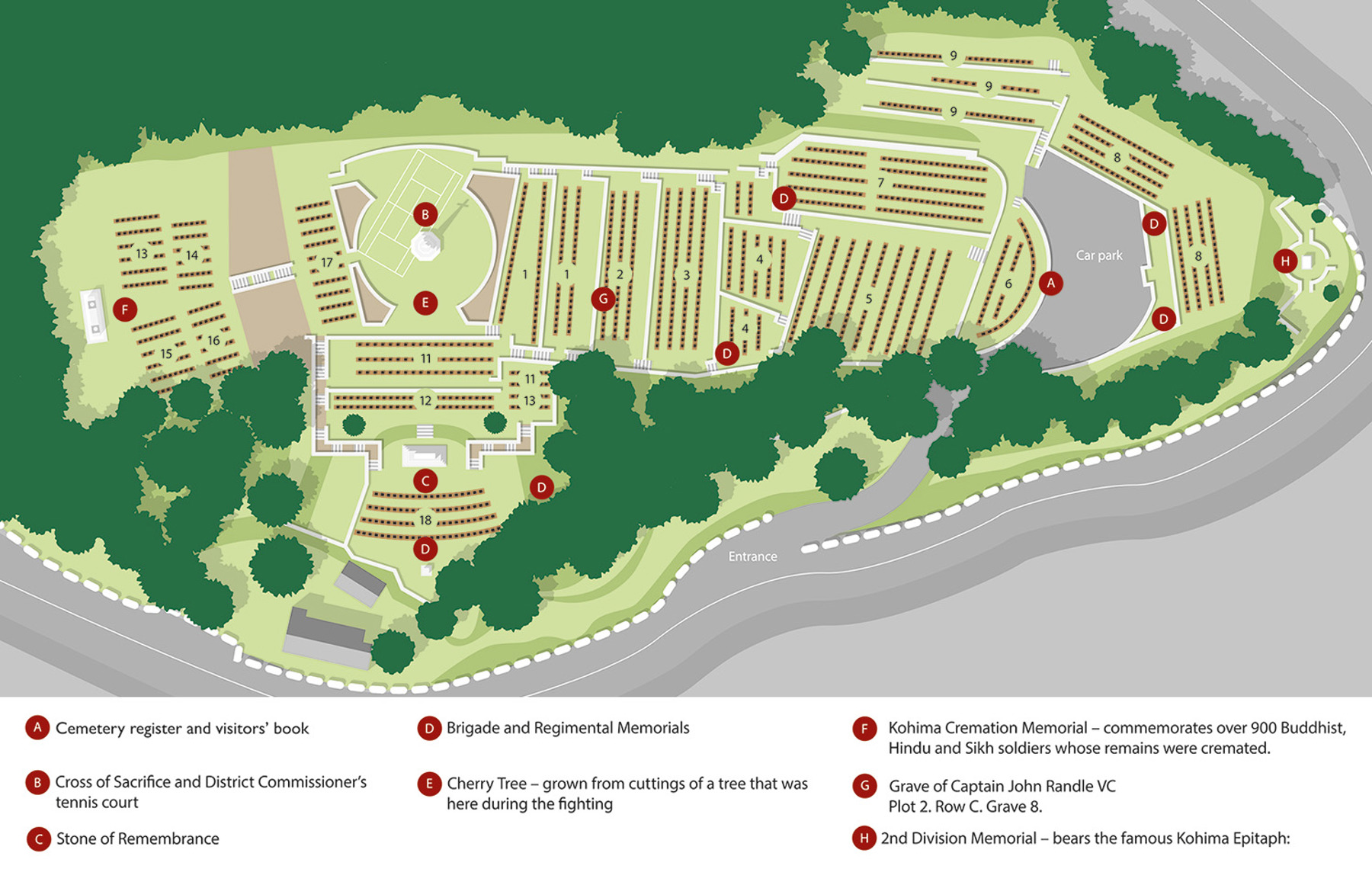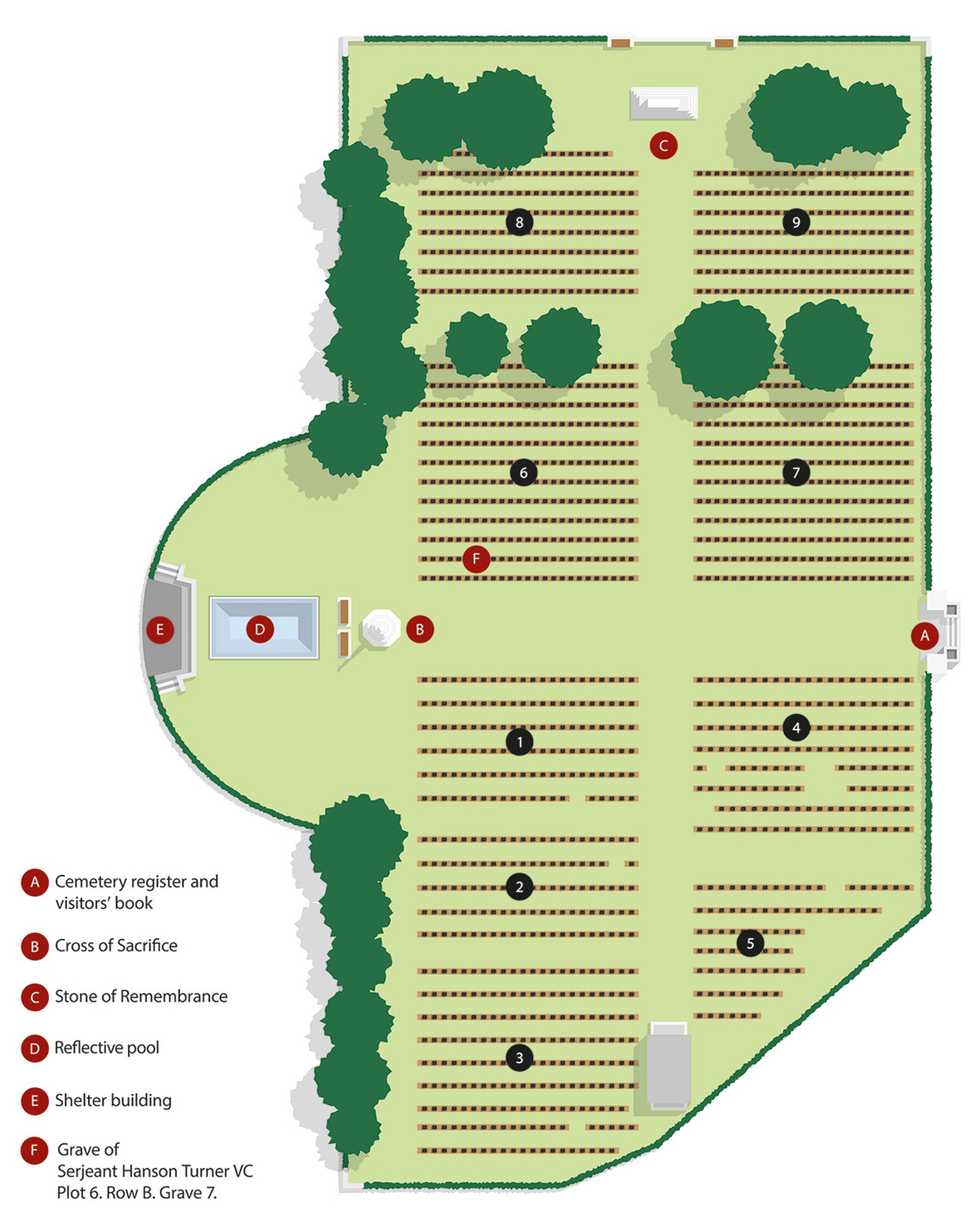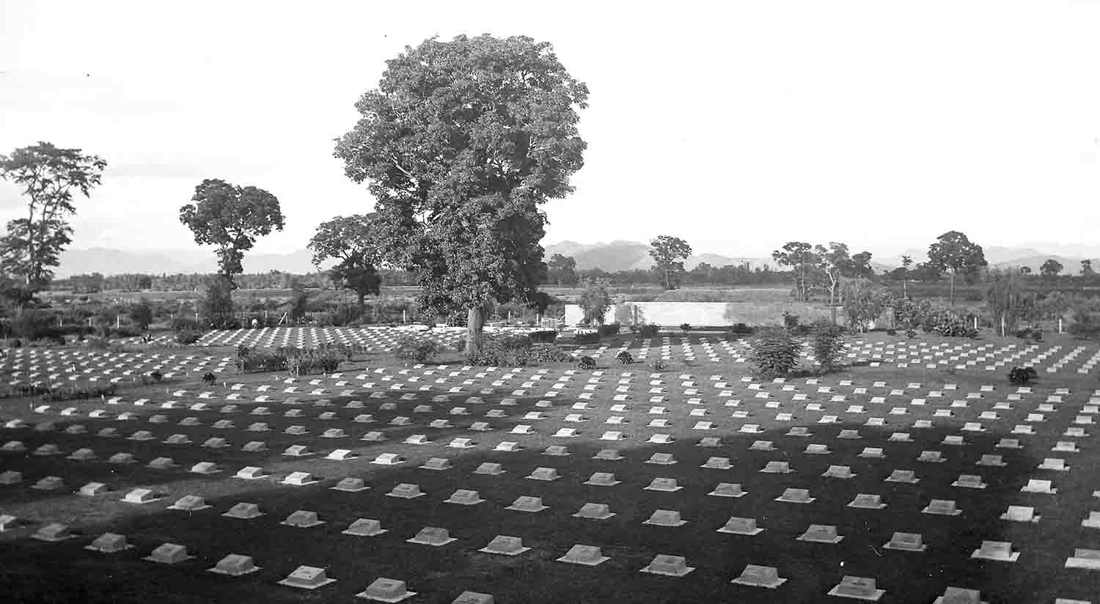
Kohima and Imphal War Cemeteries

By the end of the Second World War tens of thousands of Commonwealth service personnel had died in the Far East. Graves Registration Units (GRUs) worked to bury and record the resting places of the dead, but nowhere was this task harder than in the jungles of north-eastern India and Burma. The fighting raged across vast areas, often covered by dense jungle, and after more than three and a half years of war, many thousands had no known grave.
In the late 1940s, the work of the GRUs in India and Burma were considered complete and the cemeteries were passed into the perpetual care of the War Graves Commission. The Commission appointed the architect Colin St. Clair Oakes, and he transformed these rudimentary burial grounds into permanent and fitting final resting places.

Kohima War Cemetery

Kohima War Cemetery is perhaps the most iconic of the CWGC’s cemeteries in the Far East. The first burials were made here during the fighting in 1944, and it was decided soon afterwards that a permanent cemetery should be built.
 Over the following years isolated burials were brought from across the surrounding area, and plots for different religions were created.
Over the following years isolated burials were brought from across the surrounding area, and plots for different religions were created.
In August 1948, the cemetery passed into the care of the War Graves Commission. Colin St. Clair Oakes incorporated the unique features of the site into his design, including the tennis court across which the battle had raged, and the only cherry tree to have survived the battle.
Today, almost 1,300 Commonwealth servicemen are buried here. More than 900 Hindu and Sikh soldiers who were cremated in accordance with their faith are commemorated on the Kohima Cremation Memorial within the cemetery.
There are also many memorials placed by comrades and veterans in memory of those buried here. Inscribed on the 2nd Division Memorial is the famous Kohima Epitaph:
When you go home, tell them of us and say,
for your tomorrow, we gave our today.

Imphal War Cemetery

 This cemetery was begun during the war and more than 500 servicemen were laid to rest here. After the fighting was over the Imphal plain and the surrounding mountainous jungles were searched and the graves and remains of 1,000 other personnel were brought here for burial.
This cemetery was begun during the war and more than 500 servicemen were laid to rest here. After the fighting was over the Imphal plain and the surrounding mountainous jungles were searched and the graves and remains of 1,000 other personnel were brought here for burial.
The cemetery was designed in the style of a Mughal garden, using geometry and water to create an atmosphere of calm reflection. The entrance is a late example of the Indo-British Imperial style developed in the 19th Century.
Today, Imphal War Cemetery is the final resting place of more than 1,600 Commonwealth service personnel, almost 140 of whom remain unidentified.
Photo below: Imphal War Cemetery in the early 1950s with its distinctive pedestal markers (CWGC).


Leave your own Legacy
A gift in your will can help us continue telling those stories for generations to come, so their sacrifice is not forgotten.

SHARE THE STORIES OF KOHIMA AND IMPHAL
Find out more about some of the people involved in these pivotal moments in the Burma Campaign. Visit For Evermore: Stories of the Fallen, our online commemorative resource to read and share their fascinating stories.
All images © IWM unless otherwise indicated.

